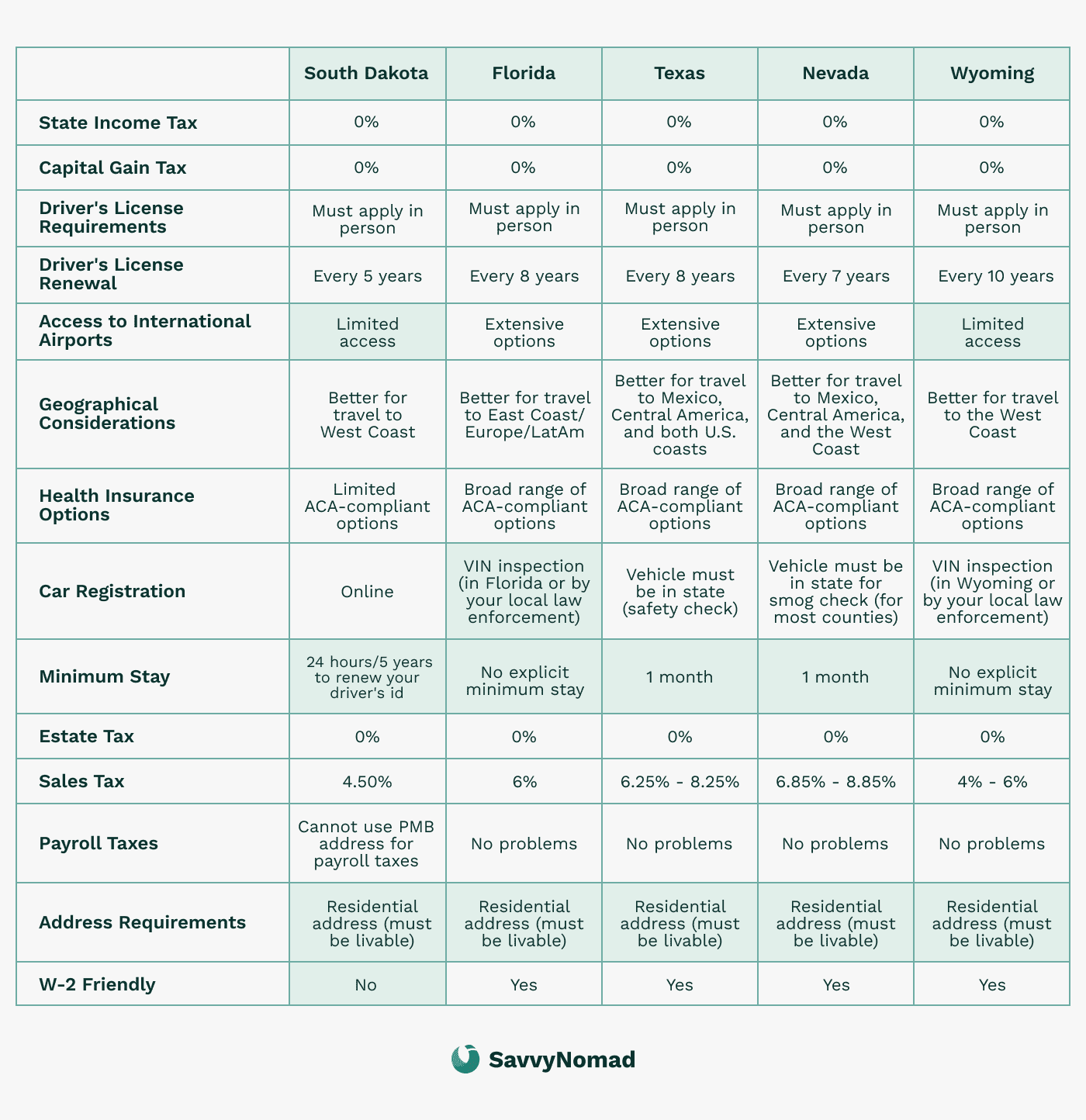How to leave Ohio residency?

Leaving Ohio residency can offer plenty of benefits, especially if you’re moving to a state with lower taxes or better weather. Ohio has an income tax system that taxes residents on their worldwide income, and for some, relocating to states like Florida or Texas, which have no state income tax, can lead to big savings.
But moving to a new state isn’t just about finding a new place to live—you also need to make sure you’re following the right steps to officially cut ties with Ohio. Ohio has specific rules, like the “contact period” rule, which tracks how often you spend time in the state.
If you spend too many “contact periods” in Ohio, you might still be considered a resident for tax purposes, even if you’ve moved elsewhere.
Step 1: Establish a new domicile
The first thing you’ll need to do when leaving Ohio residency is set up a new permanent home in another state. This doesn’t just mean physically moving but also taking steps to show that you intend to live there long-term. Here’s how to get started:
1) Establish new residency
- Secure a residential address: The first step is finding a place to live in your new state. Whether you’re renting or buying, this is the foundation for your new residency. Some states, like Florida, offer tax benefits such as the homestead exemption, which can save you money on property taxes.
The address is provided solely for documentary and correspondence purposes related to client-direct banking or brokerage verification; it is not for business registration, public listing, or general mail forwarding. Banks and state agencies make their own decisions, no specific outcome is guaranteed, and prior-state rules may still apply.
- File a Declaration of Domicile: Some states, like Florida, allow you to file an official document called a Declaration of Domicile to prove that you intend to make this new state your permanent home. This is especially helpful if you’re moving from a state with significant tax obligations, like Ohio.
Residency guides:

2) Relocate your belongings
Move your personal belongings to your new home in the state. This helps show that your move is permanent, as you are transferring your life to a new location.
3) Spend time in your new state
The more time you spend in your new state, the easier it will be to prove that it’s your true home. Try to minimize how much time you spend in Ohio during this period to avoid being taxed there. Remember, Ohio has specific rules on how much time you can spend in the state without being considered a resident for tax purposes (more on that later!).
4) Transfer IDs and vehicle registrations
Update your driver’s license and vehicle registration as soon as possible. States often view these documents as major proof of your intent to live there permanently.
5) Register to vote
If you are eligible, you may register to vote in your new state. Voter registration is one supporting indicator of domicile, not determinative on its own. It shows that you’re committed to participating in your new community, but residency is based on your overall facts and ties.
6) Update financial accounts
Notify your banks, credit card companies, and other financial institutions about your new address. This helps keep all your official documents and accounts aligned with your new residency.
7) Notify your employer
Make sure your employer updates your payroll and tax withholdings to reflect your new state of residency. This helps your withholdings line up with your new state and reduces the risk of Ohio tax being withheld after your move, though your actual Ohio filing obligations still depend on your specific facts.

Step 2: Sever ties with Ohio
Once you’ve established a new domicile, it’s crucial to cut all significant ties with Ohio to help demonstrate that the state should no longer consider you a resident for tax purposes. Here are the steps to sever those ties effectively:
1) Close Ohio financial ties
- Close local bank accounts: If you have Ohio-based bank accounts, consider closing them and transferring your funds to banks in your new state. This demonstrates that your financial life is now rooted in your new home.
- Update personal records: Update your address with the IRS, Social Security, and any other relevant entities. Keeping all personal and financial records in your new state helps solidify your move.
2) Sell or lease property
If you own property in Ohio, selling it is one of the clearest ways to show that you no longer reside in the state. Alternatively, leasing the property on a long-term basis can also demonstrate that you don’t maintain significant ties to Ohio.
3) Cancel local subscriptions/services
Make sure to cancel memberships, subscriptions, and services tied to Ohio, such as gym memberships, utility services, and local clubs. Maintaining these services could suggest that you’re still tied to the state, so transferring or canceling them is best.
4) Transfer healthcare and insurance
Updating your healthcare providers and transferring your health insurance to your new state is another important step. This helps solidify your move and indicates that your day-to-day life is now based elsewhere.

Step 3: Time spent outside Ohio
To support your nonresident position, it’s important to limit the time you spend in the state and understand Ohio’s “contact period” bright-line test. Ohio counts “contact periods” to help determine your residency status, along with your domicile and whether you file Ohio’s nonresident statement.
Here’s what you need to know:
212 contact period rule
What is a “contact period”?
Ohio defines a “contact period” as spending a portion of two consecutive days in the state. For example, if you arrive in Ohio on a Monday and leave on Tuesday, this counts as one contact period. However, if you’re in Ohio on Monday and Wednesday but not on Tuesday, it doesn’t count as a contact period.
212 contact period limit
Under current law, if you (1) have no more than 212 contact periods in Ohio during the year, (2) maintain at least one abode outside Ohio for the entire year, and (3) timely file Ohio’s nonresident statement (Form IT NRS / non-Ohio domicile statement), you are presumed not to be domiciled in Ohio for that year.
This bright-line test gives frequent travelers some flexibility while they keep their primary home and ties outside Ohio. If you don’t meet all of these conditions, Ohio falls back on general domicile rules and your contact periods become one piece of evidence rather than a safe harbor.
Example: If you live in Florida and spend a portion of Monday and Tuesday in Ohio, it counts as one contact period. But if you spend time in Ohio on Monday and Wednesday (without Tuesday), it does not count as a contact period.
Keep detailed travel records
It’s essential to track the time you spend in Ohio to stay under the 212 contact period limit. Keep documentation like flight tickets, hotel receipts, or any other travel-related proof that shows your time spent outside Ohio.
If the Ohio Department of Taxation ever questions your residency or the number of contact periods you claim, having detailed travel records will be important evidence to support your nonresident position.
Step 4: Ohio-sourced income
Even after you’ve left Ohio residency, you may still have tax responsibilities for income earned within the state.
Here’s how to manage ongoing obligations for Ohio-sourced income:
1) Ongoing tax responsibilities
If you continue to earn income from Ohio, such as rental income, business profits, or wages, you’ll need to file a non-resident Ohio tax return. Filing as a nonresident helps Ohio tax only the income you earn within the state, while income from other states or countries is generally handled under the rules of those jurisdictions.
2) Rental or business income
If you own rental property or a business in Ohio, any income generated from those sources will still be subject to Ohio state taxes. It’s important to consult with a tax professional to stay compliant with Ohio tax laws, especially if you have complex income streams that tie back to the state.





